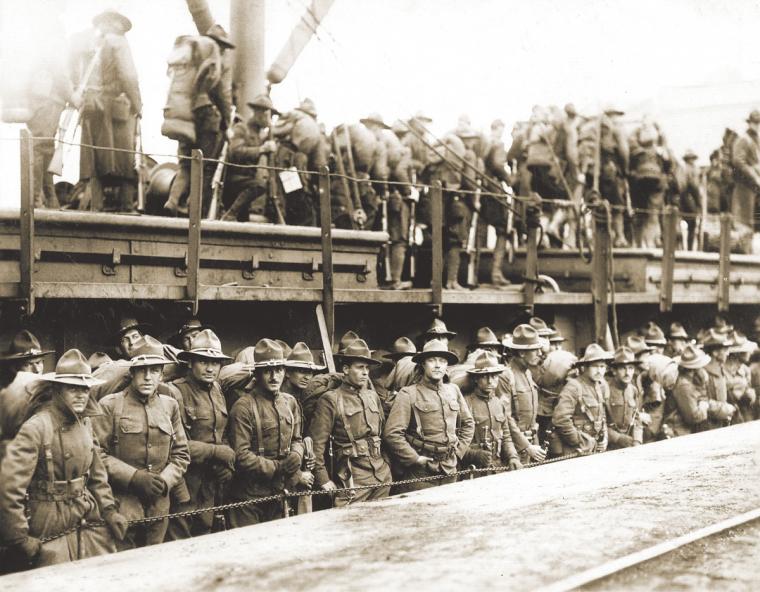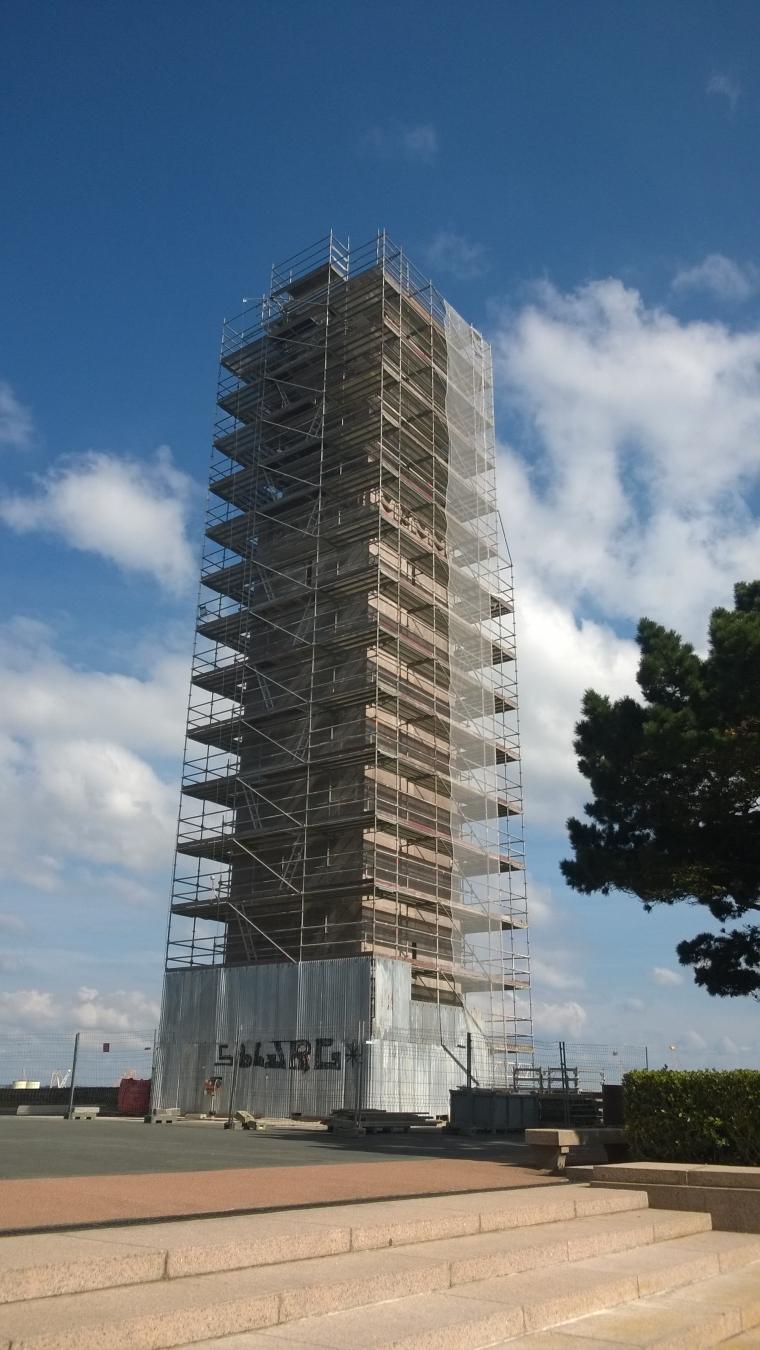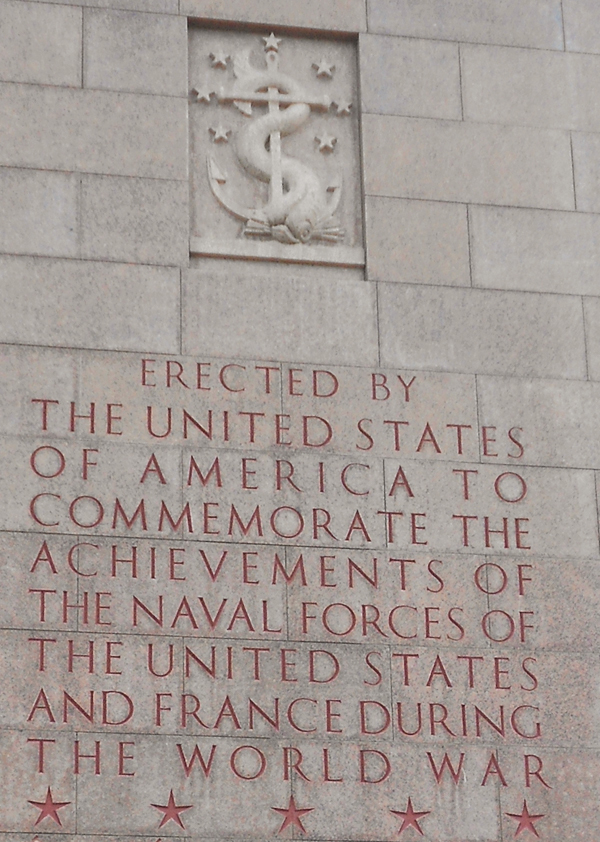The World War I Naval Monument at Brest, France stands on the ramparts of the city overlooking the harbor which was a major base of operations for American naval vessels during the war.
The original monument built on this site to commemorate the achievements of the U.S. Navy during World War I was destroyed by the Germans on July 4, 1941, prior to the United States entry into World War II. The present structure is a replica of the original and was completed in 1958.
Brest is the westernmost port of France. Its location and activities there have been vital in commerce and conflicts over the centuries. Brest was especially important to many missions of the American Expeditionary Forces (AEF) during 1917 and 1918.
The monument is a rectangular rose colored granite shaft rising 145 feet above the lower terrace and 100 feet above the Cours Dajot. It sits upon a German bunker complex at the approximate site of the original monument. All four sides of the monument are decorated with sculpture of naval interest. The surrounding area has been developed by ABMC into an attractive park.
The Naval Monument at Brest displays this inscription in both English and French:
Erected by the United States of America to commemorate the achievements of the naval forces of the United States and France during the world war.
It was the principal port of embarkation and debarkation of troops, equipment, and supplies. Of the more than 2,000,000 members of the AEF arriving in France, more than 700,000 flowed through Brest. Brest served as American Naval Headquarters in France. Its ships and aircraft performed escort duties for convoys to and from France, as well as fighting the German submarine menace.
A force of more than 30 destroyers and dozens of smaller subchasers performed the many missions to ensure safety of the sea. The Naval Air Service, flying airplanes and dirigibles, supplemented the surface forces. During July and August, 1918, more than 3,000,000 tons of shipping was convoyed in and out of French ports by vessels based at Brest. The AEF’s Services of Supply (SOS) Base Section No. 5 set up depots to accommodate arriving and departing troops. For example, its billeting facilities at Brest could accommodate 55,000 persons. The SOS operated a variety of installations in the Brest locale for assembly and delivery of vehicles and equipment to forward units.
The Naval Monument at Brest rises above a park along the Cours Dajot, overlooking the harbor. It is 800 meters southwest of the Gare de Brest.
 An official website of the United States government. Here's how you know.
An official website of the United States government. Here's how you know. 










